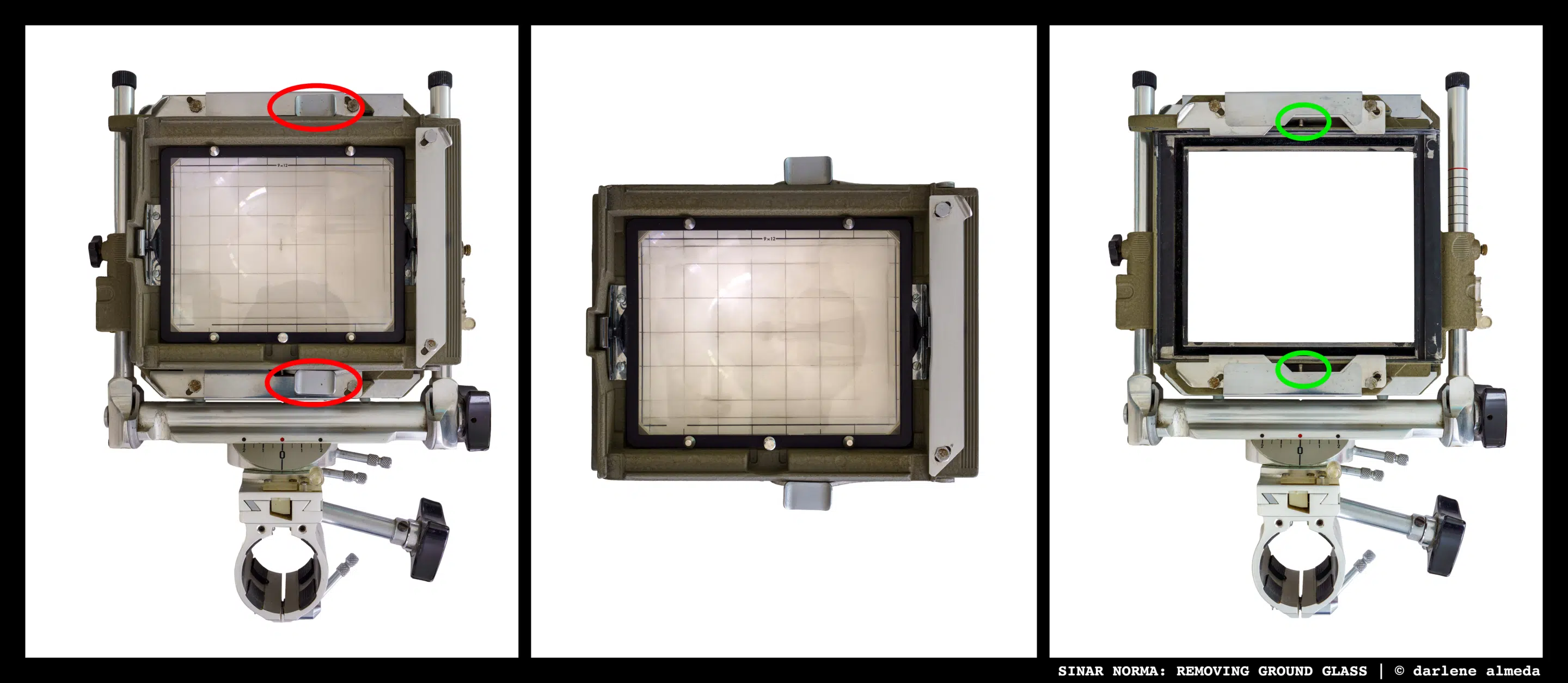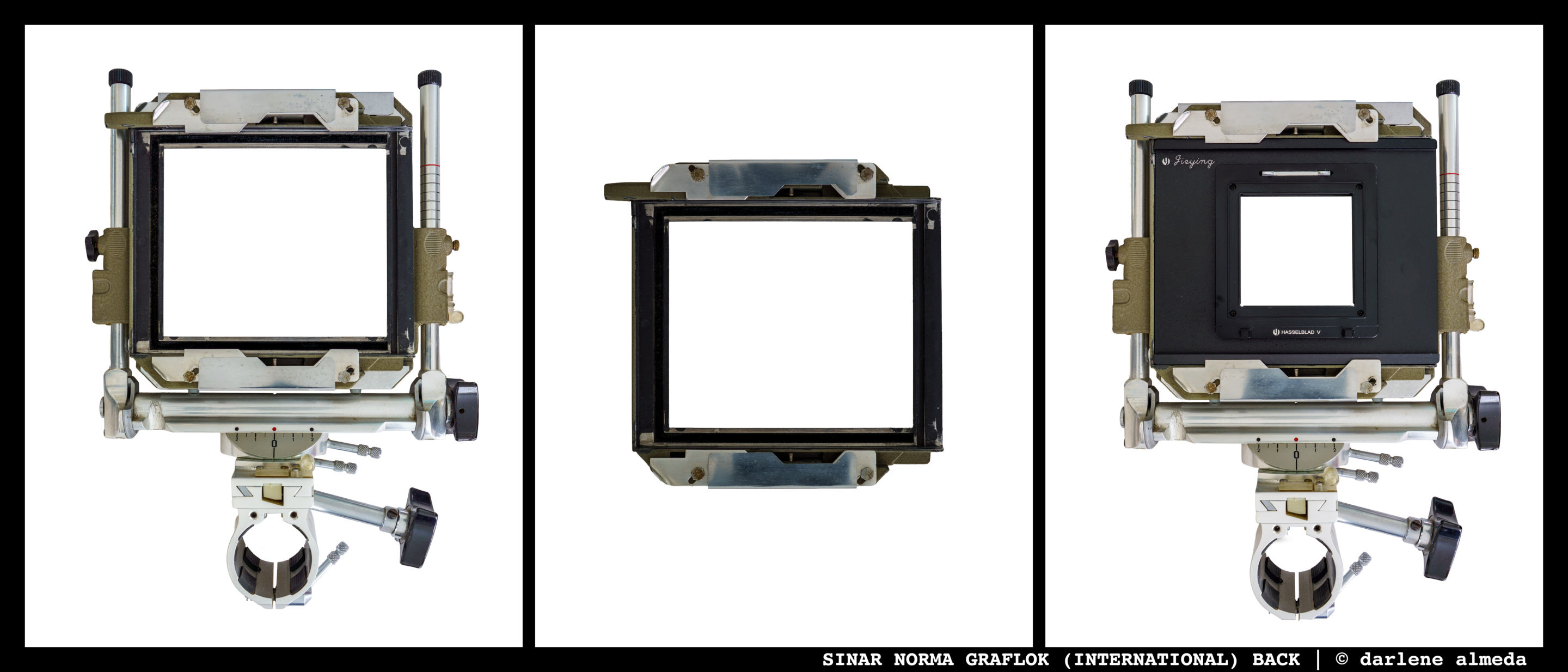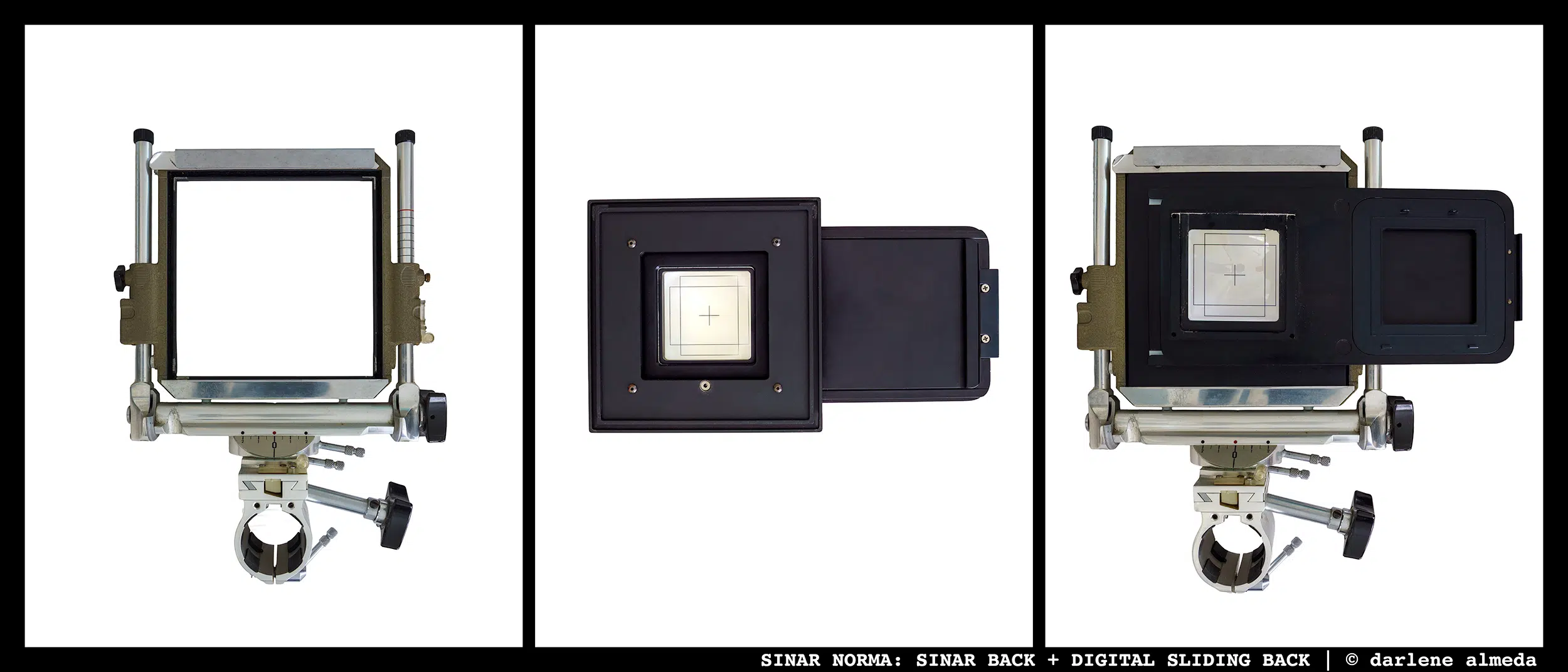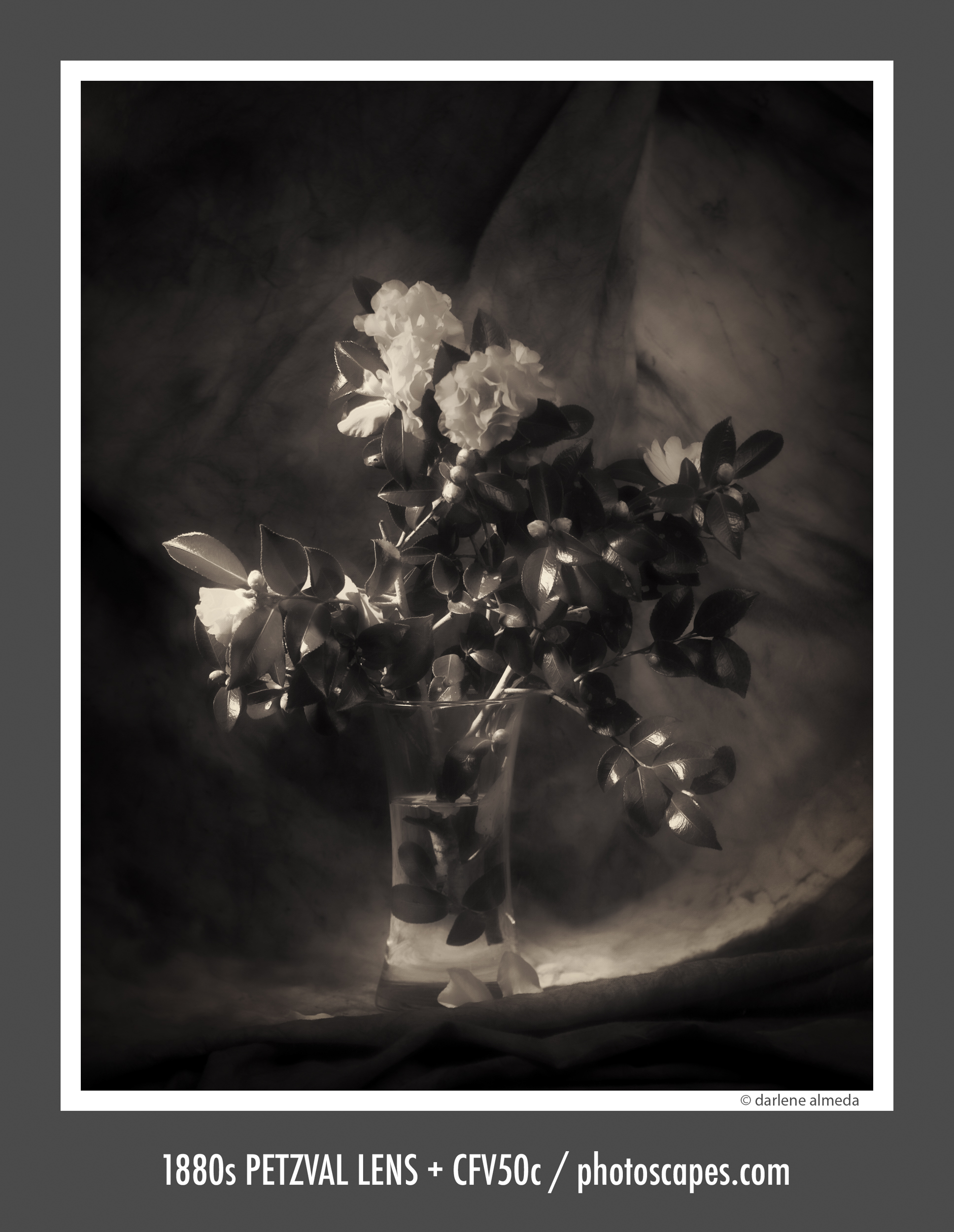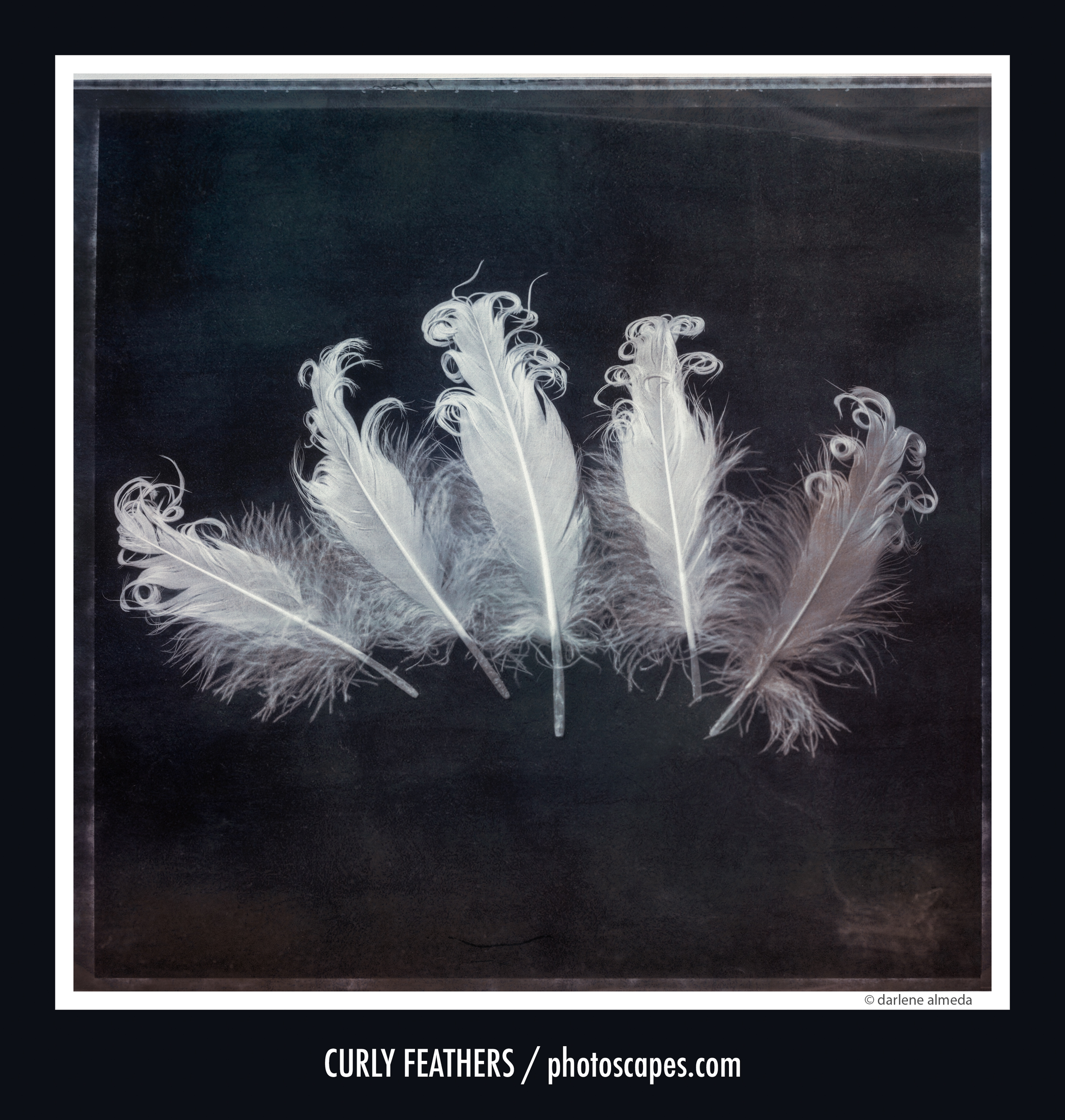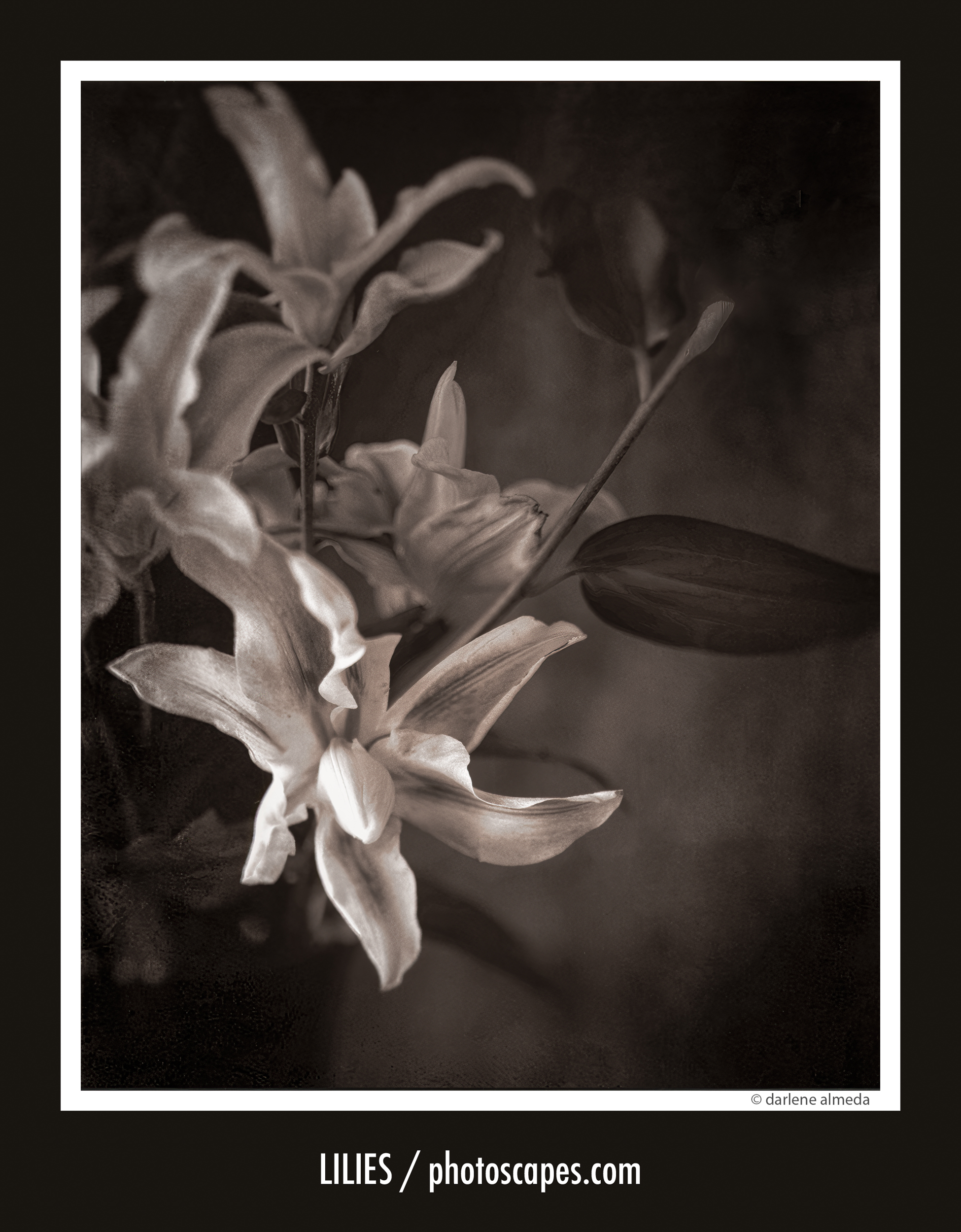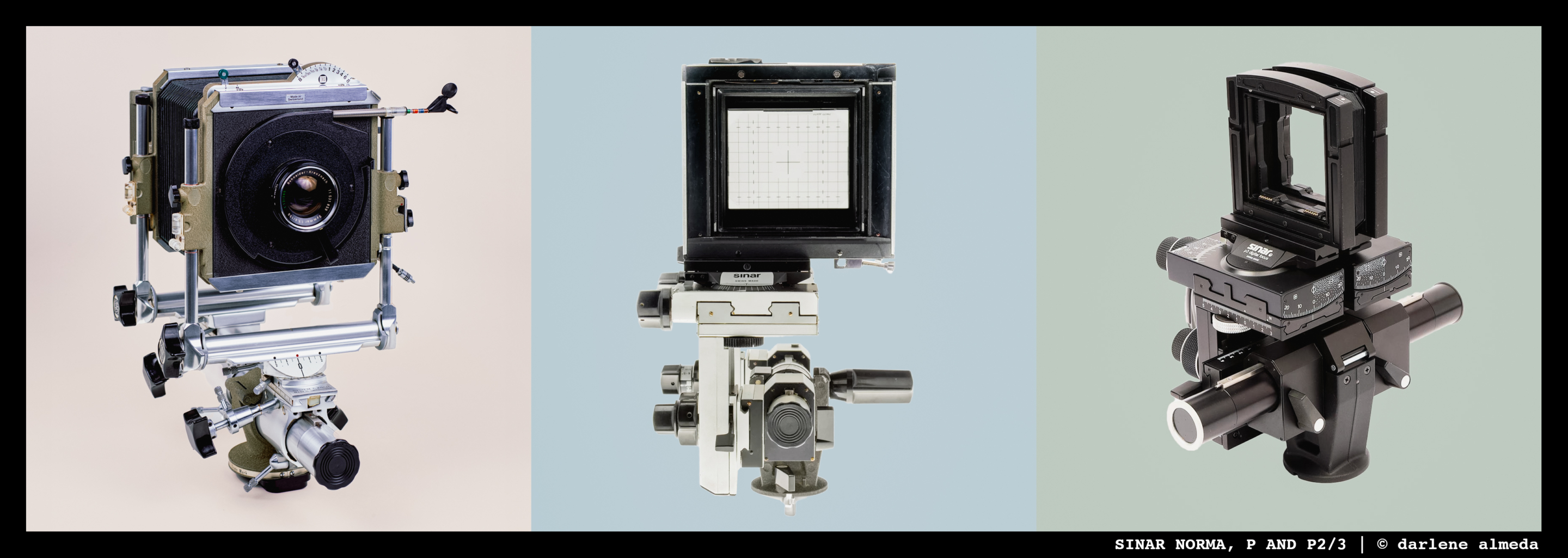
IMAGE: SINAR NORMA + P + P2/3
INTRO
Studio Industry Nature Architecture Reproduction = SINAR
Carl Hans Koch developed the Sinar Norma view camera in his garage in Switzerland in 1947, a remarkable feat of engineering and design. The Norma remains my top choice for a classic studio monorail/view camera.
Norma does not represent a famous female or a family member, but the German word for “normal.” It means “standard,” as in a basic view camera kit [source].
The Norma was in production until 1969. It is a simple, precise, elegant modular camera system that would become the worldwide benchmark for large-format monorail view camera systems.
The Norma is my choice for studio work, even in the digital age. It was not always this way, as I have owned monorail cameras designed specifically for digital, but I love the classic design of the Norma and the Sinar P2.
I may acquire a P2 someday, but until then, it is Norma for me.
MY HISTORY WITH SINAR GEAR
SINAR and related gear I’ve used together:
CAMERA:
Norma, Sinar P
SHUTTER:
Mechanical with ‘B’ Style Aperture Control
SCHNEIDER LENSES ‘B’ MOUNTS:
Symmar 150/5.6, Digitar 120/5.6 M, more
RODENSTOCK LENSES ‘B’ MOUNTS:
Sironar-N 210/5.6 MC
HASSELBLAD V BODY to SINAR ADAPTER BOARD:
use a Sinar’s bellows with complete movements
OTHER:
Sinar Filter Holder, Digital Backs, Instant Print Graflok Backs
SINAR STUDIO CHRONICLES: NORMA vs “P”
In my studio sits a pair of Sinar Normas and one lonely “P” model—plus a spare rear standard, just in case. Between you and me, the Norma aged like a fine wine. The “P”? More like boxed wine left in a hot car.
Honestly, I suspect the “P2” came about because someone at Sinar took a long look at the original “P” and said, “We can do better.” And they weren’t wrong. The “P” leans a little too heavily on plastic, which is… let’s say, not what you hope for in a legendary view camera system.
Now, the Norma? She’s all metal and chrome, like a well-loved VW Beetle that just won’t quit. Mine keeps on going and is as reliable as ever. I bought a second one years ago for parts, but it’s been so solid I could probably turn it into a lamp before I ever have to scavenge it.
So if you’re a hobbyist eyeing one of these classics, go with the Norma. It’s elegant, tough, and made for serious studio work—especially fine art or creative projects. I adore mine. I think you will too.
SINAR NORMA REAR STANDARD
GROUND GLASS REMOVAL -> GRAFLOK REMOVAL -> SINAR MOUNT
Over the years, I’ve received several inquiries about how to attach various components to a Sinar Norma, such as digital backs, Polaroid holders, or alternative viewfinders. So let’s take a moment to understand what the rear standard of the Sinar Norma (and other Sinar cameras) offers in terms of compatibility.
There are two types of attachment systems commonly found on the Sinar Norma, as seen in the image above, and hopefully on your camera as well. One is the Graflok back, also known as the International back. The other is the Sinar Mount, which is unique to the system and designed for seamless integration with Sinar-specific accessories.
SINAR NORMA GROUND GLASS REMOVAL
GROUND GLASS REMOVAL, GRAFLOK BACK REVEALED
The ground glass is mounted to the camera using a system of hooks and catches. The hooks are part of the ground glass frame, while the catches are located inside the Graflok back.
To remove the ground glass, press down simultaneously on the metal tabs at both the top and bottom of the frame (red circles). This allows you to slide the hooks out from under the Graflok catches (green circles).
Once the ground glass is detached, the Graflok back is fully exposed, revealing the sliding metal clips used to secure various components to the camera, such as roll film holders, digital adapters, or Polaroid backs like the Lomograflok.
SINAR NORMA GRAFLOK/INTERNATIONAL BACK
SINAR NORMA GRAFLOK (INTERNATIONAL) BACK
The Graflok system, initially developed by Graflex in the mid-20th century, became the de facto standard for professional large-format cameras due to its reliability and versatility. Also referred to as the International back, its widespread adoption allowed photographers to interchange accessories across different camera brands with ease. This innovation made the Graflok name nearly synonymous with compatibility in the view camera world.
To attach the ground glass, press down simultaneously on the metal tabs at both the top and bottom of the frame and slide the hooks back under the metal catches.
SINAR NORMA: SINAR MOUNT
SINAR NORMA: SINAR MOUNT
Once the ground glass is removed, you can also detach the Graflok (International) back from the rear standard. What remains is the actual Sinar mount attachment frame, a proprietary mounting surface unique to the Sinar system.
In the image above, you can see a digital back plate designed for the Sinar back, featuring built-in shift capabilities. Many accessories have been made specifically for the “Sinar” mount. When a product is labeled as compatible with “Sinar,” it typically means it will fit directly into this rear standard frame without the need for a Graflok interface.
SINAR AUTO APERTURE SHUTTER
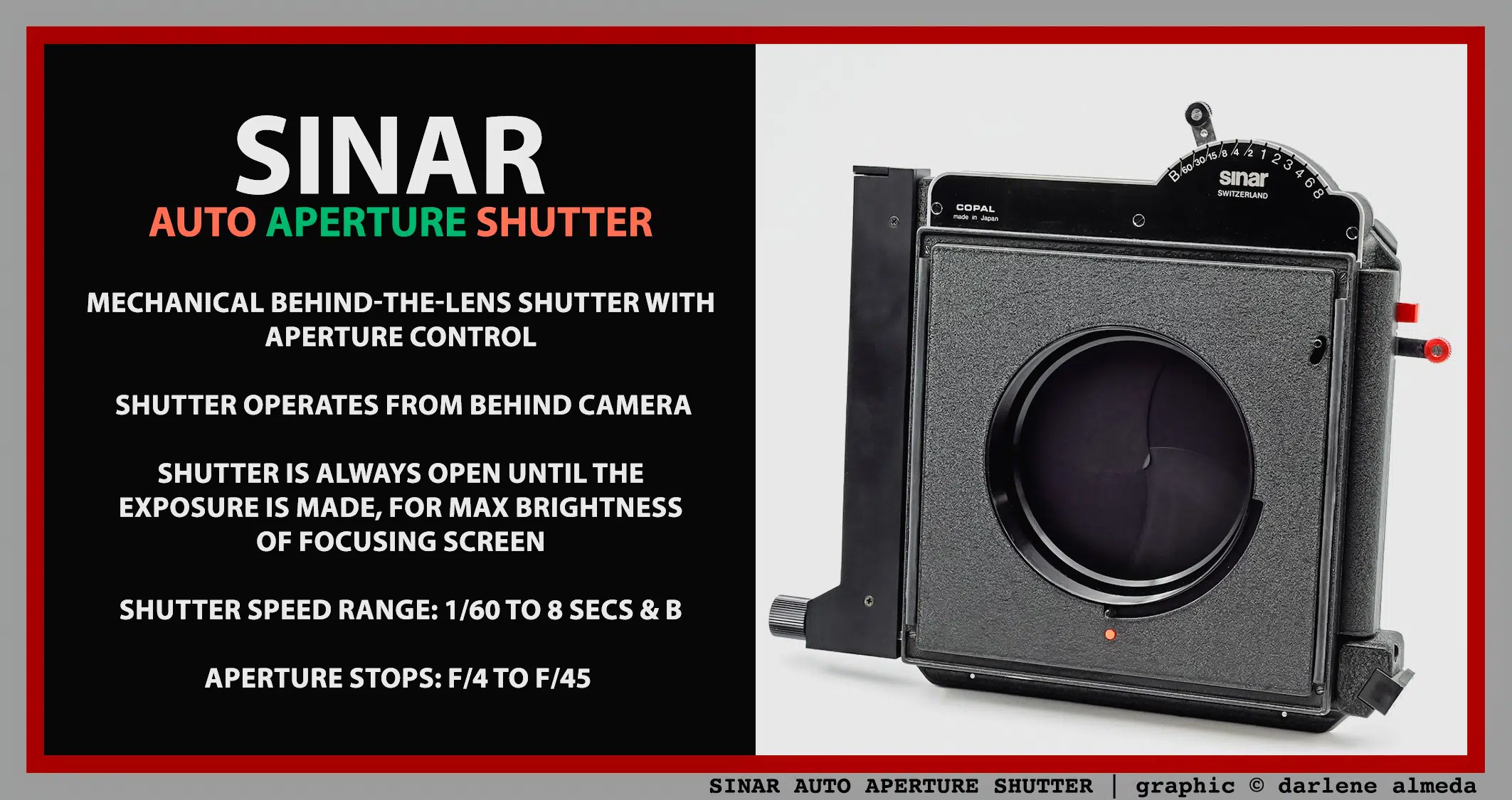
SINAR AUTO APERTURE SHUTTER
The Sinar Auto Aperture Shutter (521.31) is a mechanical, behind-the-lens shutter with spring-loaded aperture control, designed to make large-format photography more efficient and intuitive, especially in a studio environment.
I enjoy using one with my Sinar Norma, where it allows me to work entirely from behind the camera without needing to check the lens for aperture or shutter settings. The shutter remains fully open until the moment of exposure, ensuring a bright image on the ground glass for precise focusing.
When a film holder is inserted, the shutter automatically closes, preventing accidental exposures. Upon releasing the shutter, the aperture closes to the preselected value, and the shutter re-cocks itself for the next shot.
It supports shutter speeds from 1/60 to 8 seconds plus Bulb (B), and offers aperture settings from f/4 to f/45, depending on the lens and DB mount used.
PETZVAL LENS & SINAR SHUTTER
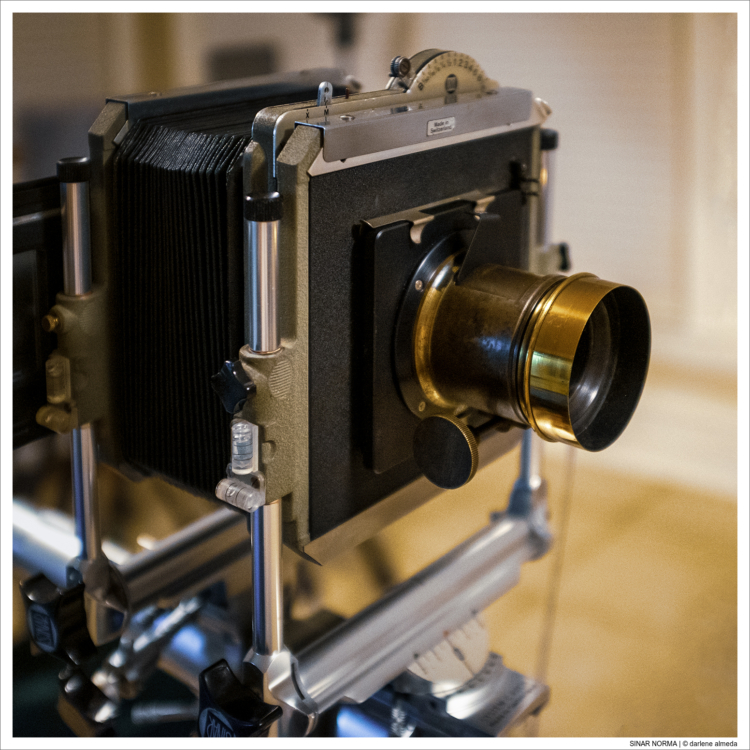
SINAR NORMA + SINAR SHUTTER + 1880s BRASS PETZVAL LENS
Pictured above is my Norma fitted with an old brass Petzval lens mounted in front of an old mechanical Sinar Shutter. Between 1840 and 1878, Petzval lenses were manufactured [source]. The photographer’s machinist company, S.K. Grimes, fabricated Waterhouse stops for my Petzval lens.
I can create unique-looking images with an antique lens, such as the Petzval, featuring Waterhouse stops and the Sinar Shutter (which lacks aperture control). The Norma can do whatever I need it to do. Whether film, digital, or instant prints, Norma is waiting in my studio, ready to go!
SINAR + PHASE ONE LightPhase FlexAdaptor
The Phase One LightPhase FlexAdaptor is an accessory designed for mounting digital backs onto 4×5 large format film cameras. Its sliding mechanism allows for precise positioning of the digital back, enabling multi-capture stitching techniques to produce high-resolution images. The model I use is specifically for Sinar cameras and requires the removal of the Graflock back.
On the right side of the FlexAdaptor, a small position selector dial features four color-coded stops, each indicating a specific stitching alignment. Please refer to the manual for detailed stitching instructions.
For accurate composition, the FlexAdaptor includes a specialized focusing screen with marked guidelines. These guidelines define the image areas available in one-, two-, or three-capture modes, giving photographers full control over the capturing process.
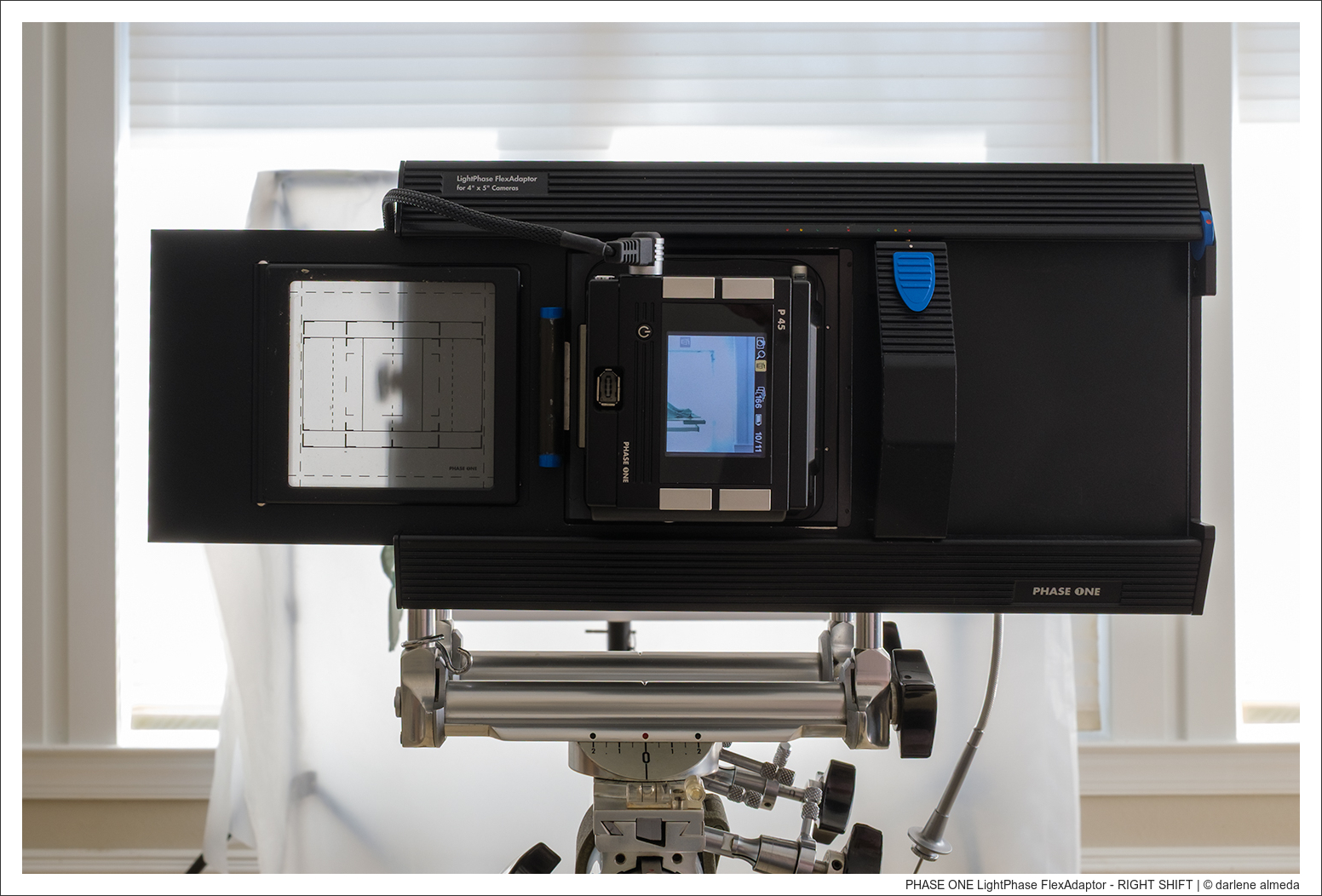
PHASE ONE LightPhase FlexAdaptor – RIGHT SHIFT
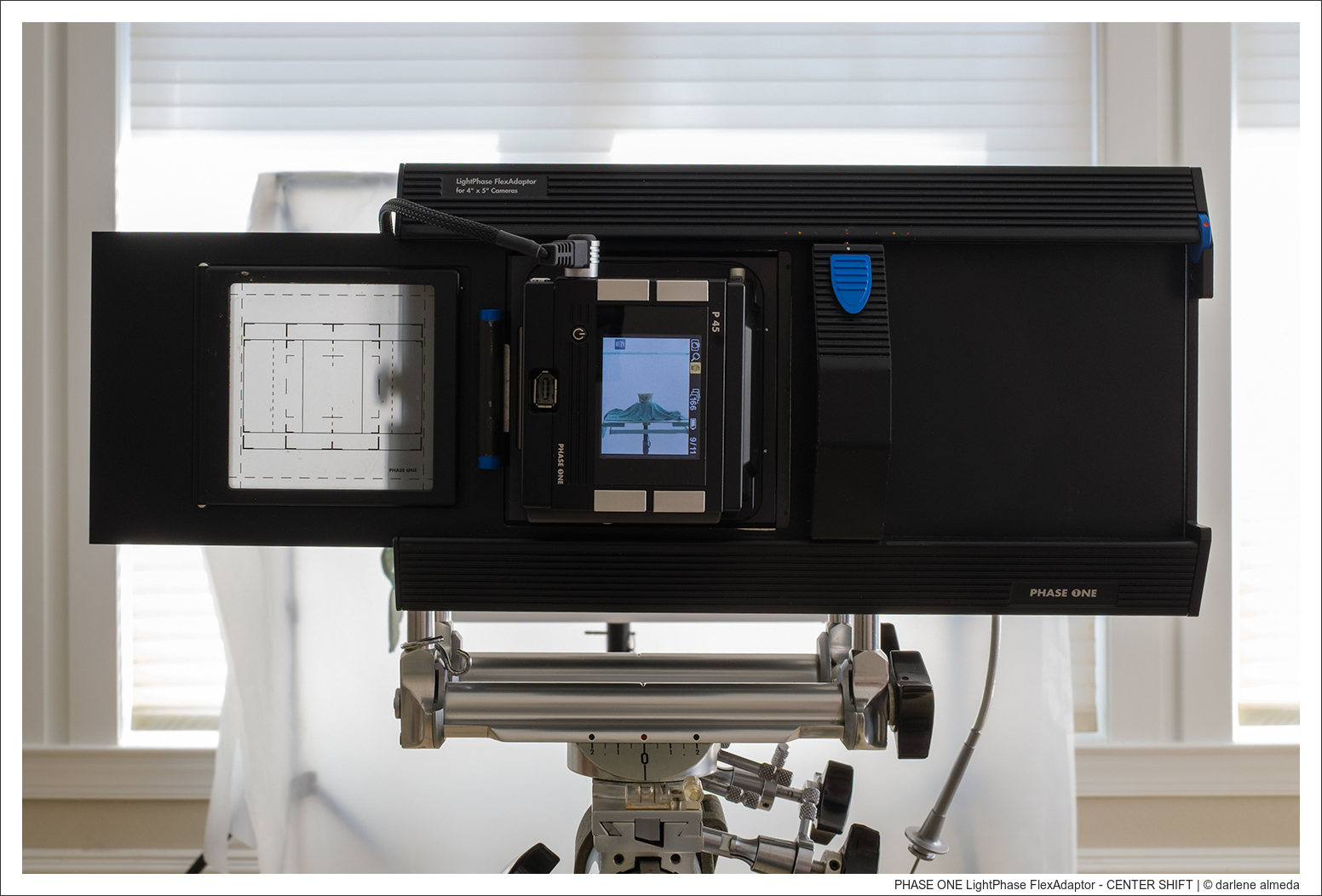
PHASE ONE LightPhase FlexAdaptor – CENTER SHIFT
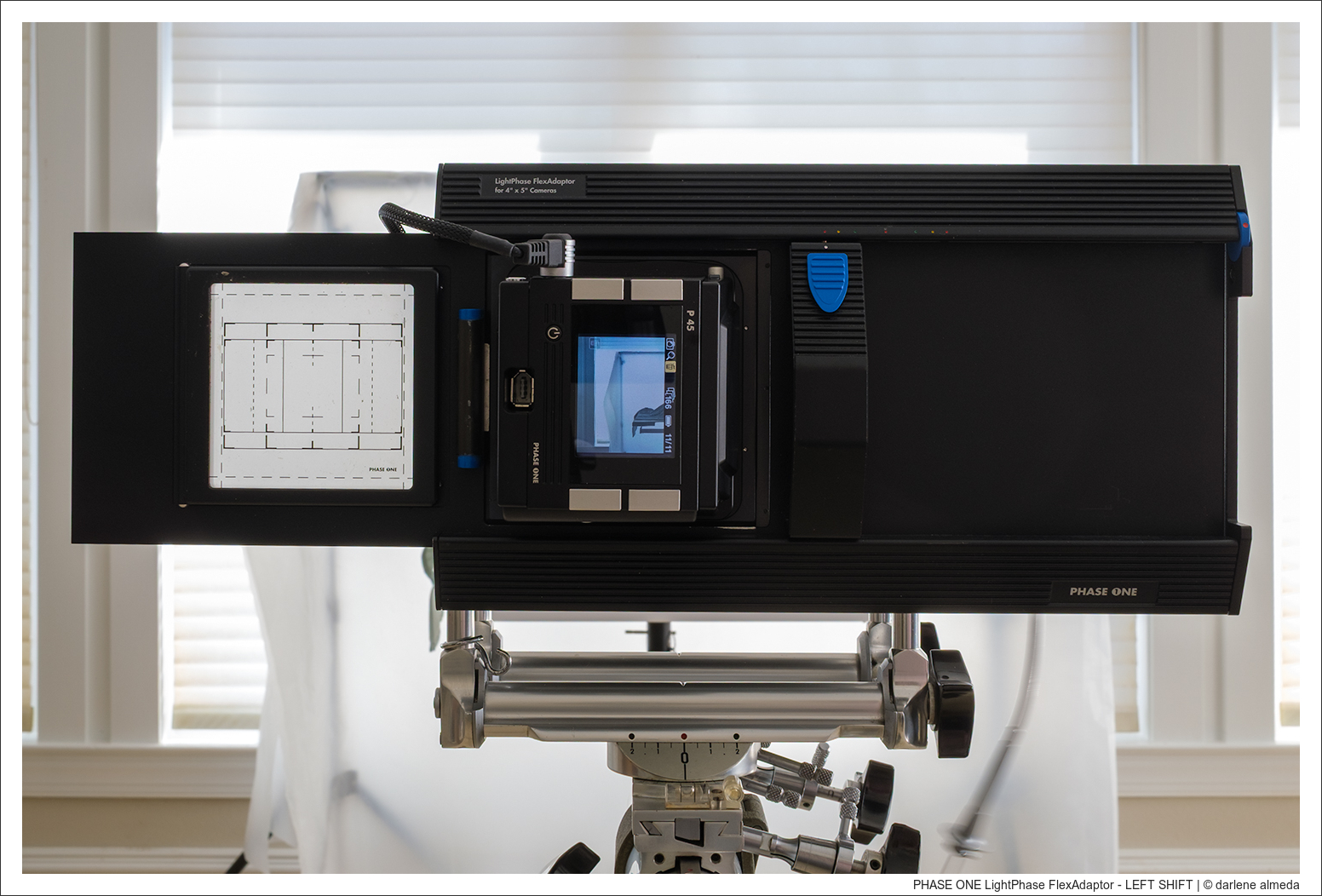
PHASE ONE LightPhase FlexAdaptor – LEFT SHIFT
NORMA + LOMOGRAFLOK + FUJIFILM INSTAX WIDE
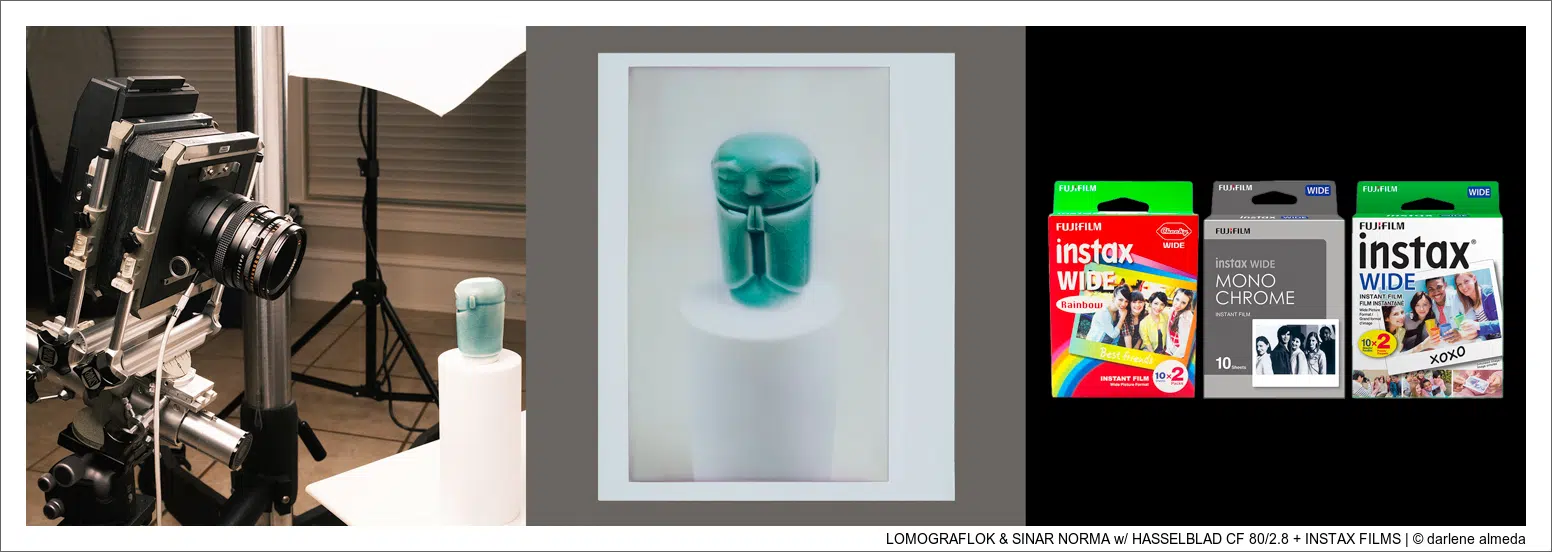
LOMOGRAFLOK & SINAR NORMA w/ HASSELBLAD CF 80/2.8 + INSTAX FILMS
Pictured above is a Lomograflok Fuji Instax Wide 4×5 back on my Sinar Norma with a Hasselblad CF 80/2.8 lens.
The Hasselblad lens is mounted via an adapter made for Linhof boards. I used a Sinar-Linhof adapter board to make it work. There is just the right amount of bellows drawn with this setup to work with the standard bellows.
Fuji Instax is a better film than Polaroid, in my opinion. Polaroid film has consistency problems. Nothing is worse than spending money on a film you cannot count on. Instax is not hard to find. I order a Five Pack Bundle (5 x 20-Pack/100 sheets) from Adorama as they seem to have the best price.
Basics and Applications: Creative Large Format
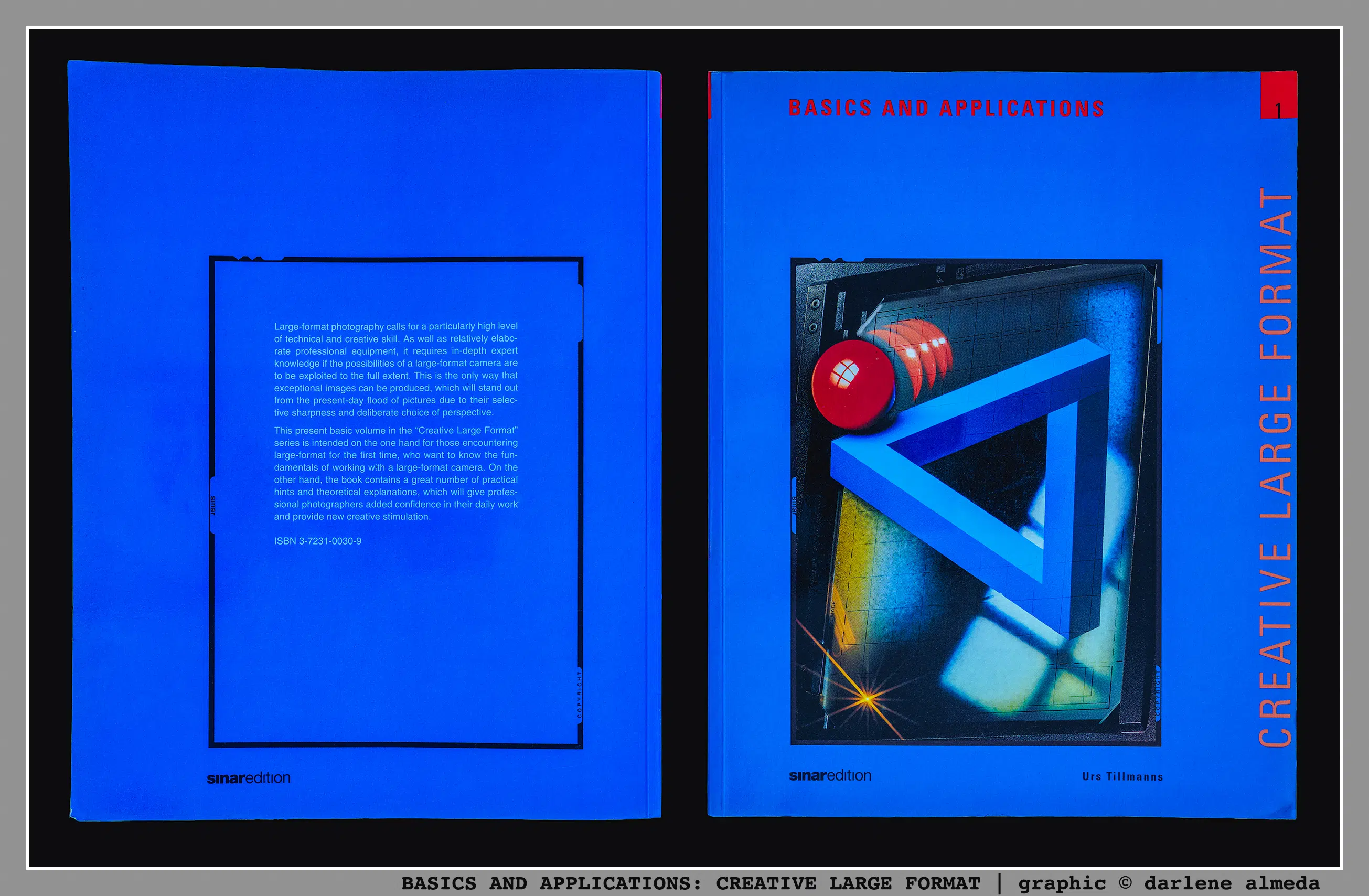
BOOK: Basic and Applications: Creative Large Format


